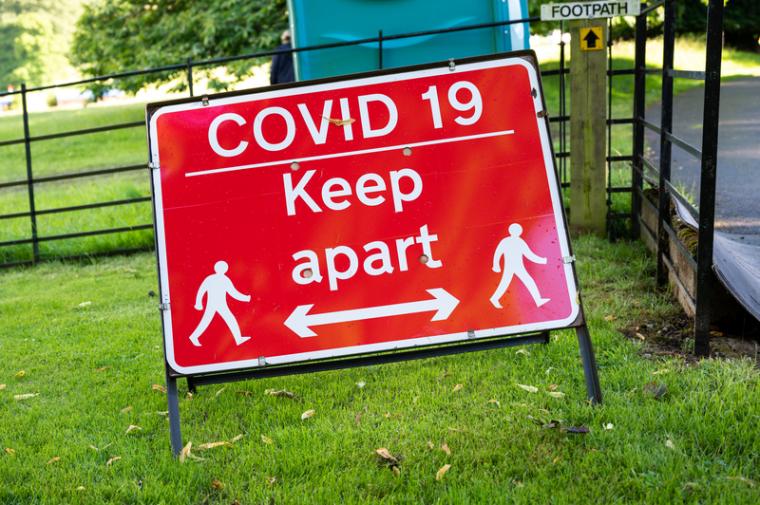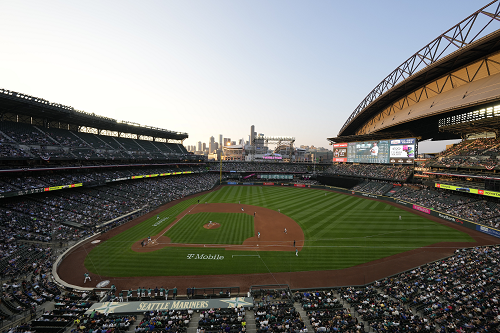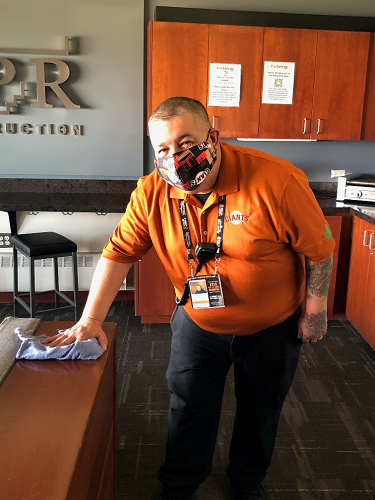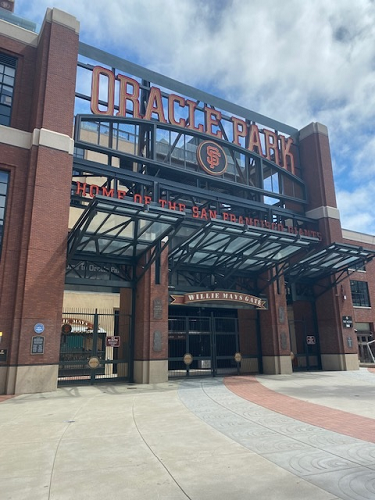

Whether you manage a 65,000-seat outdoor stadium or a smaller indoor arena, the way you approach public health and safety is imperative. According to a January 2022 survey from Morning Consult, a global market research firm, just 37 percent of Americans are comfortable attending a sporting event at this time. More than half (54 percent) are uncomfortable due to the risk that the pandemic presents, especially in potentially crowded settings.
With the public keeping score on how organizations are handling the virus and events hosted in these environments, facility managers need a robust plan in place that will not only protect fans but also players, support staff of these teams, and employees, from the ticket takers to concessions workers to custodians. A layered approach is one of the most effective routes to take, as it considers best practices such as addressing indoor air quality, regular and proper cleaning and disinfecting, and training facility service professionals.
2020 Throws a Curve Ball into Venue Management
Stadiums and arenas are accustomed to hosting thousands of spectators at a time. Unfortunately, the pandemic forced temporary closures, shortened seasons, and fan-less games around the world. Even one of the most anticipated global events, the Summer Olympic Games, was postponed 12 months and the Winter Olympic Games did not allow international fans to attend.
It is every venue manager’s hope that those obstacles are behind them, but it is impossible to predict how the pandemic will continue to evolve and what other threats the industry might face down the road. What is known is that people want assurance that facilities hosting events are prioritizing public health and safety. In a 2021 survey, 86 percent of respondents said they want to see proof that a business is cleaned and sanitized regularly. Additionally, 94% believe cleaning and disinfecting should be a priority for businesses in the future regardless of current events.
 One of the ways that venue managers can bolster their defense against biorisks like COVID-19 and drive confidence among attendees, teams, and employees is through formal accreditation of their infection prevention, cleaning, and disinfection programs. GBAC STAR™ Facility Accreditation from the Global Biorisk Advisory Council (GBAC)™, a Division of ISSA, is an annual accreditation that highlights that a facility meets the highest standards for infectious disease prevention, response, and recovery. To date, many notable stadiums have achieved accreditation, including Hard Rock Stadium in Miami, Crypto.com Arena in Los Angeles, Lincoln Financial Field in Philadelphia, T-Mobile Park in Seattle, and more.
One of the ways that venue managers can bolster their defense against biorisks like COVID-19 and drive confidence among attendees, teams, and employees is through formal accreditation of their infection prevention, cleaning, and disinfection programs. GBAC STAR™ Facility Accreditation from the Global Biorisk Advisory Council (GBAC)™, a Division of ISSA, is an annual accreditation that highlights that a facility meets the highest standards for infectious disease prevention, response, and recovery. To date, many notable stadiums have achieved accreditation, including Hard Rock Stadium in Miami, Crypto.com Arena in Los Angeles, Lincoln Financial Field in Philadelphia, T-Mobile Park in Seattle, and more.
To achieve this designation and display the program’s corresponding accreditation seal, a facility has to showcase compliance with 20 program elements tied to cleaning, disinfection, and infection prevention. Venues that work closely with building service contractors can even request that these service providers achieve GBAC STAR™ Service Accreditation. Accredited service providers have proven cleaning and disinfection programs as well as the knowledge to assist facilities in achieving GBAC STAR accreditation or reaccreditation. Reaccreditation demonstrates an ongoing commitment to public health and safety, showing continuous improvement of their program.
How to Win at Cleaning, Disinfection, and Infection Prevention
A multi-layered strategy to outbreak prevention, response, recovery, and building resilience is key. In addition to securing a trustworthy accreditation, facility managers should consider the following infectious disease prevention protocols:
- Require proof of vaccination or a negative virus test. Local and state government requirements can change as the incidence of the virus fluctuates. To maintain a level of certainty about sporting events at your venue, implement a standard requirement around proof of vaccination or a negative test result. Although breakthrough infections can happen, vaccines consistently prevent severe illness and can reduce the spread of the virus even as new variants emerge.
- Put a mask protocol in place. While there are many questions about masks, from which type is best to when they should be worn, masks do work to reduce airborne droplet transmission. Keeping this layer of protection in place makes sense from a biorisk management perspective, especially in spaces involving larger gatherings. Discuss the appropriate mask protocol: required, optional, etc. and provide reminders as needed.
- Encourage good hygiene. Good hygiene can further reduce the spread of germs. To increase the likelihood that visitors will practice good hygiene, it’s necessary to have essentials like hand soap, paper towels, and hand sanitizer in stock at all times. Regularly check restrooms and sanitizing stations to gauge supply levels and refill as needed. Clear signage also helps encourage hand sanitizing, mask-wearing, and remaining six feet apart to facilitate social distancing.
 Establish cleaning and disinfection procedures and frequencies. If someone has tested positive in your venue within the last 24 hours, the CDC recommends fully cleaning and disinfecting the facility. When there aren’t any identified cases, disinfecting, especially high-touch areas, is still key. Venues should develop a plan based on the types of surfaces and most-frequented areas within the facility and train cleaning professionals on what, when, and how to clean and disinfect.
Establish cleaning and disinfection procedures and frequencies. If someone has tested positive in your venue within the last 24 hours, the CDC recommends fully cleaning and disinfecting the facility. When there aren’t any identified cases, disinfecting, especially high-touch areas, is still key. Venues should develop a plan based on the types of surfaces and most-frequented areas within the facility and train cleaning professionals on what, when, and how to clean and disinfect.- Commit to training and certification. Regular training of cleaning professionals gives them confidence to perform essential tasks, enhances the consistency of cleanliness, and reduces job-related injuries. Consider the positive impact that certification courses can have on your custodial staff as well. Training and certification pair nicely with a third-party accreditation to ensure you have a strategic approach to cleaning, disinfection, and infection prevention in place.
- Bring cleaning to the forefront. Before the pandemic, cleaning was typically an unseen process that occurred after hours. While some may call it hygiene theater, people want to see proof that cleaning and disinfecting is occurring. Develop a schedule that will enable cleaning professionals to address important areas of the facility before, during, and after sporting events to instill greater confidence in your venue.
- Manage indoor air quality. SARS-CoV-2, the virus that causes COVID-19, is spread primarily by inhaling respiratory droplets of an infected person. Maintaining good indoor air quality (IAQ) helps reduce the transmission of airborne virus particles, so it is important to consider ways to enhance the IAQ levels in your stadium or arena. Working with an HVAC expert and vetting technologies that have emerged to improve IAQ can improve ventilation and monitoring.
Exceeding your Cleanliness Goals
The pandemic has been anything but predictable. With multiple variants and changing local, state, and federal guidelines, it can be difficult for venue managers to understand the best approach to hosting safe sporting events. With many venues now reopened and hosting sporting events, concerts, shows, and conventions, it’s important to uphold high standards of cleaning, disinfection, and infection prevention to protect employees, attendees, and our communities. A layered method that considers accreditation, education, and other cleaning and hygiene strategies can help set stadiums and arenas up for success as an increasing number of people begin to feel comfortable returning to these facilities again.

